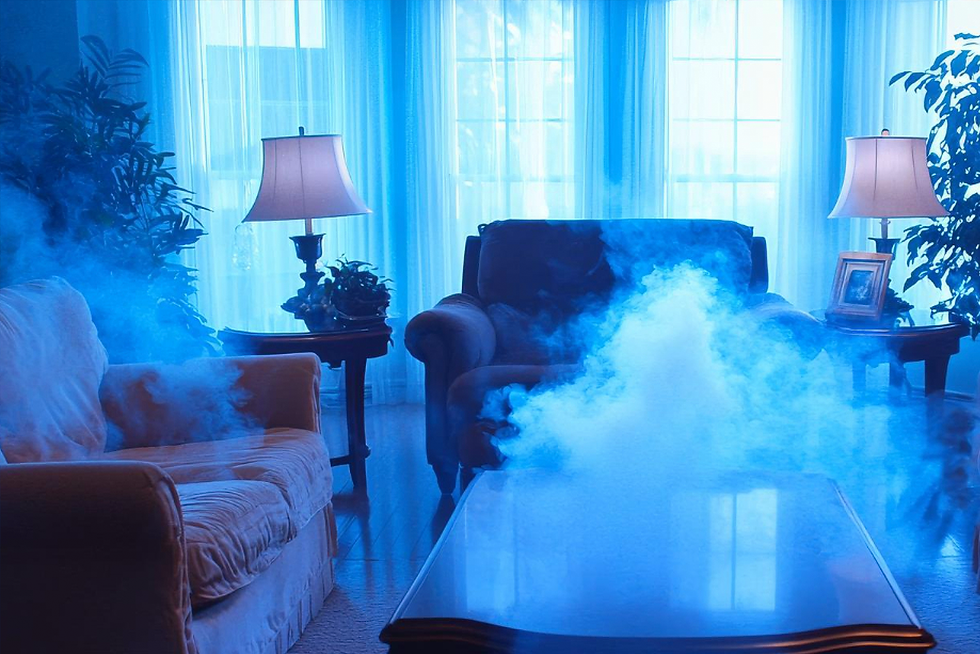What are the most common indoor allergies?
- Corey Provencal

- Aug 3, 2010
- 3 min read
The five most common indoor allergens are dust mites, mold, animal dander, cigarette smoke and cockroaches. While you can’t rid your home entirely of these allergens, you can take simple steps to reduce your exposure.
Allergies are a prevalent problem for many people. The National Institute of Allergy and Infectious Disease reports that more than 500 million people suffer from allergic diseases. While many blame allergens such as ragweed, pollen, grass and other outdoor allergens, many of the biggest allergens may lie a bit closer to home. In fact, they are in our homes. Locking yourself in your home to find solace from your allergies may actually worsen your affliction.
Our homes harbor many allergens. According to http://www.emedicinehealth.com, indoor allergens can be quite problematic due to the fact that they can go year round, whereas allergens such as ragweed are seasonal. “The five most common indoor allergens are dust mites, mold, animal dander, cigarette smoke and cockroaches. While you can’t rid your home entirely of these allergens, you can take simple steps to reduce your exposure,” said Tom Kallstrom, Director of Respiratory Care and Biometrics at Fairview Hospital in Cleveland, Ohio.
“Since most of us spend a majority of our time in the bedroom, it’s important to make your bedroom an allergy-free sanctuary. That means, whenever possible, removing bedroom carpet and keeping your hardwood floors dust free as much as possible. If that’s not feasible (if you live in an apartment, for instance), then frequent dusting and vacuuming are in order,” he said. Kallstrom also said,” Asthmatics and severe dust mite allergy sufferers should not vacuum carpet themselves, since vacuuming can stir up dust. So, if you’re one of these folks, have someone else do your vacuuming. And if you’re allergic to animal dander, be sure to keep pets out of your bedroom at all times.”
“Dust mites are a big cause of indoor allergies and asthma. Dust mites feed on human and animal dander. And it isn’t the dust mite that you’re allergic to. It’s the dust mite’s by-product. What happens is that the (dust mites’) excrement becomes airborne, and that’s what triggers allergy symptoms. By decreasing the level of humidity in our homes and constant cleaning we can keep their presence down to a minimum,” Kallstrom says. Familydoctor.org advises us to weekly wash bedding in water that is at least 130 degrees to rid your bed of dust mites. Mattress covers and pillow covers that will keep these dust mites from embedding into them will also make for a more allergy-free home.
Air quality in your home is vital to making your home an asthma and allergy-free refuge. By using proper air filtration you can take out a lot of the airborne particles that are to blame for some allergic reactions. These airborne particles are made up of different things. Cockroaches actually compose part of those particles. Their saliva, feces, and body parts are huge allergens and are so small they become airborne. Animal dander is also a part of the equation. People often confuse the allergen with pet hair while the allergy is sparked by the skin dander on the animal, according to medicinenet.com. Cigarette smoke also adds to the cocktail of allergens that is present in some homes. By filtering out these threats we can have homes that are much healthier.
If we can target these top five indoor allergens then we will go a long way to creating the safe havens we intend our homes to be.
•John P. Lapotaire, CIEC •Certified Indoor Environmental Consultant •Microshield Environmental Services, LLC •www.Microshield-ES.com www.CFL-IAQ.com
#microshield #IESO #CETC #indoorairquality #HOA #FloridaMoldLaw #mold #moldpretreatment #Schoolmold #moldtesting #moldprevention #healthyhome #iaqa #condomold #moldinspection #moldremoval #moldremediation #johnlapotaire #ACAC #newhomemold #Apartmentmold #JohnPLapotaire #HouseBill713 #ciec #airquality









Comments